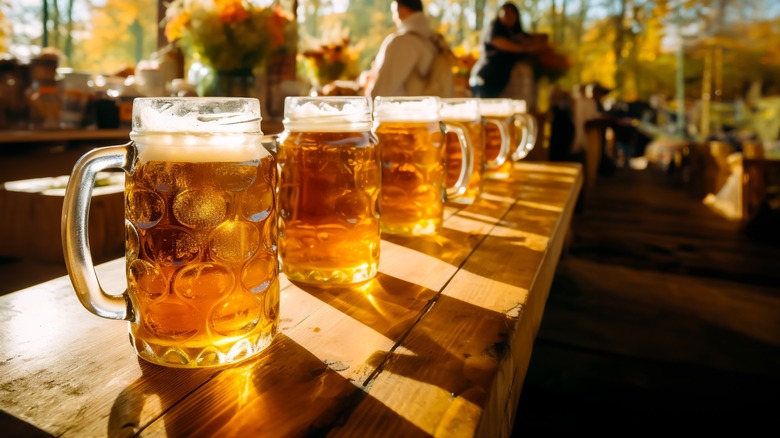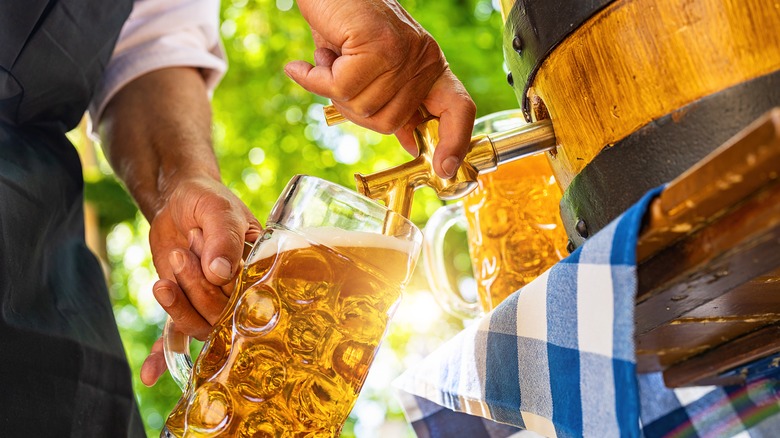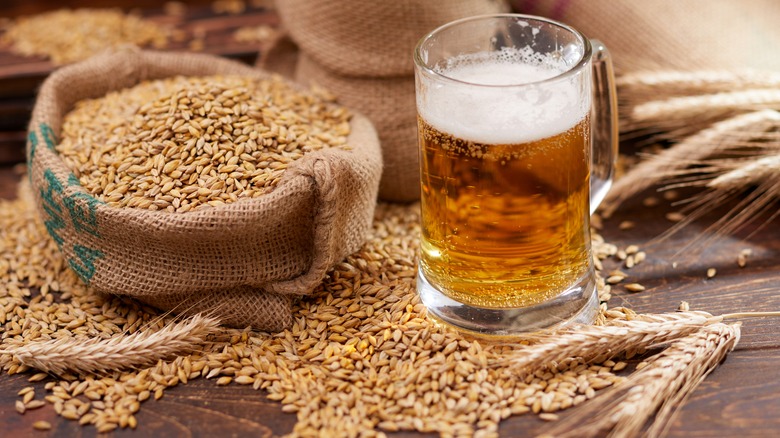Malt Beer Vs Liquor: The Differences You Should Know
Malted grains have been the secret ingredient behind alcoholic beverages for centuries. The process starts by soaking cereal grains in water for a couple of days, allowing them to germinate. Next, the germinated grains are roasted in an oven, cracking their outer shells and exposing the sugar-packed core within. After a second soaking, the grains release their sugary sweetness into the water, which is then filtered to create a malted beverage. At this point, brewers have two options: they can either use the malted beverage to make malt beer or transform it into malt liquor.
They may sound like the same thing, but not quite! While both are made from the same source material (the malted grains), the final drinks are very different in flavors, colors, and alcohol contents. To clear up the confusion, let's take a closer look at what exactly malt beer and malt liquor are, just in case the question comes up in the next pub quiz night!
Malt beer is just beer
Malt beer is literally just the beer that you'll find sold in six-packs at your local grocer — Buds, Corona, Coors ... all those are malt beer. By definition, a malt beer is an alcoholic drink that's made from four key ingredients: malted grains (usually barley), hops, yeast, and water. After the malted grains are steeped and the sugary water is filtered, it's then boiled together with hops to add bitterness and flavors. After the mixture cooled down, yeast is mixed in, which feeds on the sugars to produce alcohol and carbonation as it ferments. The end result: beer!
While the fundamentals are the same, there's incredible variety when it comes to malt beer styles. The particular grains, hops, yeast, and brewing methods used result in everything from crisp lagers to rich, robust Guinness stouts. You'll find colors spanning the entire spectrum, from pale golden hues to deep, bold browns (also referred to as light beer and dark beer). Flavor profiles are just as diverse. Malt-forward beers deliver a sweeter, breadier taste from those sugary grains. Hop-heavy varieties are more bitter and bold.
Where malt beer differs from malt liquor is their fairly low alcohol by volume (ABV). All of the malt beer you'll find today (including craft beer) will generally run between 4% to 6% alcohol. This makes them very easy, casual drinks that can be enjoyed by pretty much anyone — but picking one to your taste should still be a priority!
Malt liquor is the stronger version
Don't let the name fool you, malt liquor isn't exactly a liquor like bourbon whiskey or vodka. It's just another kind of beer, but with a bit higher alcohol content than the usual draft of malt beer. Typically, they'll go above 6% ABV, but some bottlings can go beyond 9%, too.
It's made similarly to beer, but with some key differences in ingredients and process. Malt liquor is brewed with more fermentable grains like corn and rice in addition to malted barley (which is how they got their extra ABV). There's also fewer hops in the drink, so the bitterness is halved and you'll get more sweetness from the liquor. It also has a very pale gold color because of this — much paler than the beer.
To sum up, while malt beer and malt liquor are both grain-based alcoholic beverages, they differ slightly in ingredients and flavors, but majorly in their alcohol content. Malt beer is great for casual, social drinking. But if you want something with a bit more of a boozy kick, try malt liquor!


